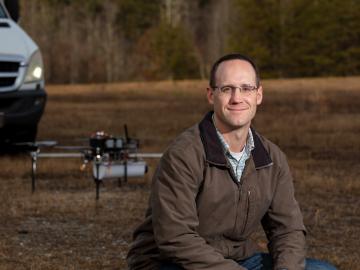
Filter News
Area of Research
- (-) Computational Engineering (1)
- (-) Fusion Energy (15)
- (-) National Security (22)
- (-) Neutron Science (19)
- (-) Quantum information Science (2)
- Advanced Manufacturing (3)
- Biological Systems (1)
- Biology and Environment (20)
- Computational Biology (2)
- Computer Science (1)
- Energy Science (19)
- Fusion and Fission (24)
- Isotope Development and Production (1)
- Isotopes (28)
- Materials (29)
- Materials for Computing (4)
- Nuclear Science and Technology (17)
- Supercomputing (31)
News Topics
- (-) Biomedical (17)
- (-) Cybersecurity (21)
- (-) Fusion (17)
- (-) Space Exploration (3)
- 3-D Printing/Advanced Manufacturing (9)
- Advanced Reactors (9)
- Artificial Intelligence (19)
- Big Data (9)
- Bioenergy (11)
- Biology (11)
- Biotechnology (2)
- Buildings (1)
- Chemical Sciences (5)
- Clean Water (3)
- Composites (1)
- Computer Science (42)
- Coronavirus (12)
- Energy Storage (8)
- Environment (14)
- Exascale Computing (1)
- Fossil Energy (1)
- Frontier (3)
- Grid (7)
- High-Performance Computing (7)
- Hydropower (1)
- Machine Learning (16)
- Materials (17)
- Materials Science (26)
- Mathematics (2)
- Microscopy (5)
- Nanotechnology (12)
- National Security (35)
- Neutron Science (120)
- Nuclear Energy (17)
- Partnerships (5)
- Physics (11)
- Polymers (1)
- Quantum Computing (1)
- Quantum Science (17)
- Security (12)
- Simulation (1)
- Summit (9)
- Transportation (7)
Media Contacts

Deborah Frincke, one of the nation’s preeminent computer scientists and cybersecurity experts, serves as associate laboratory director of ORNL’s National Security Science Directorate. Credit: Carlos Jones/ORNL, U.S. Dept. of Energy

Scientists have found new, unexpected behaviors when SARS-CoV-2 – the virus that causes COVID-19 – encounters drugs known as inhibitors, which bind to certain components of the virus and block its ability to reproduce.

To better understand how the novel coronavirus behaves and how it can be stopped, scientists have completed a three-dimensional map that reveals the location of every atom in an enzyme molecule critical to SARS-CoV-2 reproduction.

Two staff members at the Department of Energy’s Oak Ridge National Laboratory have received prestigious HENAAC and Luminary Awards from Great Minds in STEM, a nonprofit organization that focuses on promoting STEM careers in underserved

Horizon31, LLC has exclusively licensed a novel communication system that allows users to reliably operate unmanned vehicles such as drones from anywhere in the world using only an internet connection.

Pick your poison. It can be deadly for good reasons such as protecting crops from harmful insects or fighting parasite infection as medicine — or for evil as a weapon for bioterrorism. Or, in extremely diluted amounts, it can be used to enhance beauty.

Combining expertise in physics, applied math and computing, Oak Ridge National Laboratory scientists are expanding the possibilities for simulating electromagnetic fields that underpin phenomena in materials design and telecommunications.

From materials science and earth system modeling to quantum information science and cybersecurity, experts in many fields run simulations and conduct experiments to collect the abundance of data necessary for scientific progress.

A team of researchers has performed the first room-temperature X-ray measurements on the SARS-CoV-2 main protease — the enzyme that enables the virus to reproduce.

Temperatures hotter than the center of the sun. Magnetic fields hundreds of thousands of times stronger than the earth’s. Neutrons energetic enough to change the structure of a material entirely.


